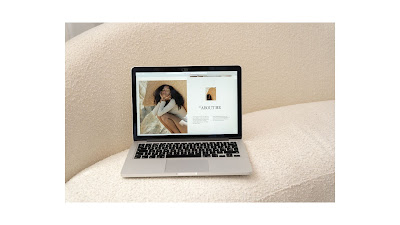You took an important step into freelancing. Yet, there lies a problem: you have no clients, and every job application requires a "portfolio." Panic setting in? You're not alone.
Every successful freelancer started without any clients. What separates them from others is how they prove their skill, in the absence of paid work. Are you wondering how to achieve that, without actually faking it or working for cheap? This guide is your green light.
Here are creative, proven, and completely free options to grow a freelance portfolio from scratch—be it for a writer, designer, developer, marketer, or anything in between.
🧠 1. Start With Mock Up Projects
.jpg)
If you don't have any real clients yet then just create them.
Choose a few fictional businesses (or just reimagine real ones) and produce deliverables you would get paid for under normal conditions.
- Writers: Sample blog posts, product descriptions, or newsletters.
- Designers: Logos, social media posts, or website layouts.
- Developers: Landing page coding, app UI, or custom script development.
💡Pro Tip: Use Behance or Dribbble to present your mock projects as case studies.
🌐 2. Give Away Your Work for Free…But With Limits
.jpg)
Working for free can sometimes feel like selling yourself short, but not if you do it wisely.
- Pick one or two businesses or nonprofits you really admire.
- Offer a particular, valued service ("I'd love to redesign your about page for free").
- Request a testimonial and permission to display the work.
You acquire the following:
✅ Real-world experience
✅ Something for your portfolio
✅ A potential first client (good news: lots of free clients eventually turn into paid ones)
📓 3. Build Case Studies to Showcase Your Skills
.jpg)
Even if it was a personal work or part of a college project, tell them the story behind it.
Format your case study as follows:
- Problem: What needed fixing or creating?
- Process: How did you approach the work?
- Solution: What did you deliver?
- Impact: What was the result?
🧠 How and why this works: Clients want to see how you think, not just what you made.
💼 4. Use Freelance Platforms as a Source of Inspiration to Generate Fast Samples
Upwork, Fiverr, Freelancer - These freelance sites are not only for getting paid to work; they're also useful for inspiration.
- Check out real project listings.
- Recreate a sample which the client might actually ask for.
- Throw in some of your own style.
🎯 For example: if you're a copy writer, put together some rewritten sample gig descriptions as if they were for a client in the niche you want to target.
✍️ 5. Set Up a Niche Blog or Instagram Page
Define the freelance niche and start a blog, LinkedIn newsletter, or Instagram feed around it.
- Developers: Blog tutorials or GitHub projects.
- Designers: Post visuals or Instagram time-lapses.
- Marketers: Growth tips or content audits on LinkedIn.
These are the strategies that help you set up as an expert way before you land any clients, and it also becomes as portfolio material too.
📢 6. Use Canva or Notion to Build a Free Portfolio Site.jpg)
.jpg)
You don’t need a fancy website to showcase your work.
Free platforms you can use:
- Canva (Free Templates) – Pick their "Portfolio" or "Presentation" ones.
- Notion – Clean, customizable, and way popular among freelancers.
- Google Sites – Super easy drag-and-drop website builder.
- Behance/Dribbble/GitHub – Public workspaces that are well-respected in creative and dev industries.
📁 INCLUDE:
- Your best mock/free projects
- About section with niche + services
- Testimonials (if any)
- Contact info or CTA (e.g., "Let's Work Together")
💬 7. Get Endorsements from Your Classmates, Mentors, or Friends.jpg)
.jpg)
You may never have worked with paid clients before, but you have surely collaborated with someone on something. Get a few of these people to write short reviews about your work ethic, creativity, and skills.
Display these mini-testimonials like this:
"Surya is incredibly focused and detail-oriented. He helped me rewrite my resume and even fixed my LinkedIn bio!"
This starts to build social proof and credibility for you right away.
🚀 8. Join Online Challenges to Build Public Work
Joining the challenges will:
- Push your creativity
- Build Consistent Portfolio Pieces
- Help you meet other freelancers
💡 Try:
- #100DaysOfCode for developers
- Design Daily UI Challenge for designers
- 30-Day Writing Challenge for copywriters and content creators
Showcase your daily/weekly output as portfolio-worthy pieces.
🔗 9. Create Content Out of Your Learning Process
.jpg)
Are you learning anything new for freelancing? SEO, Figma, React? Document it.
Blog or post on LinkedIn about:
- "What I Learned from Designing My First Landing Page"
- "How I Fixed My First Bug in React"
- "My First SEO Audit Using Free Tools"
You are building proof of growth and connecting potential clients to follow your journey.
🛠 Tools to Help You Build a Free Portfolio
Here are some free tools you can use to organize and present your work:

Final Thoughts: No clients ≠ No portfolio
.jpg)
Don't wait for clients to give you permission to start freelancing. Give yourself momentum.
The powerful portfolio does not reside in big-name brands or fancy metrics - it just needs:
✅ Good examples
✅ Clear thinking
✅ A hint of personality
Give yourself a start, Build, write, and create - soon you are going to get clients at your doorstep.


.jpg)
.jpg)
.jpg)


.jpg)

0 Comments